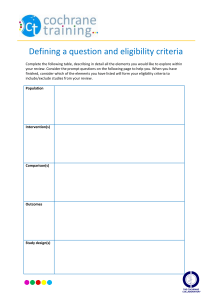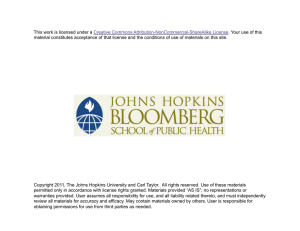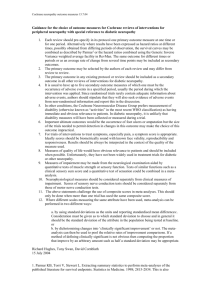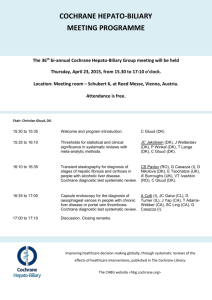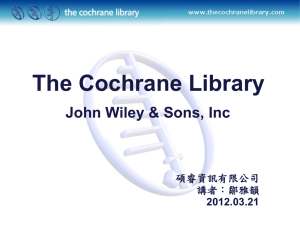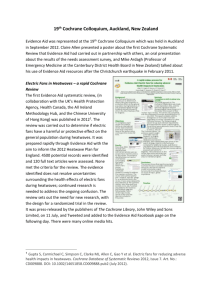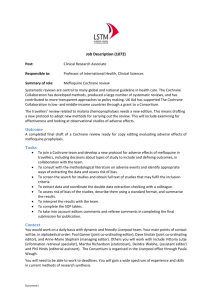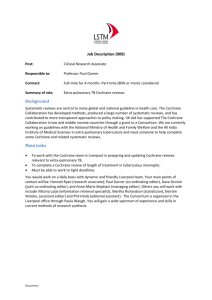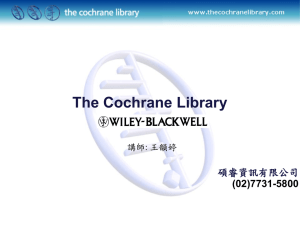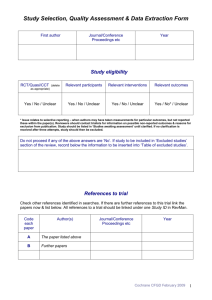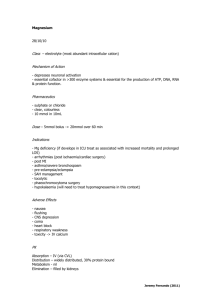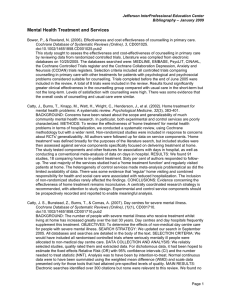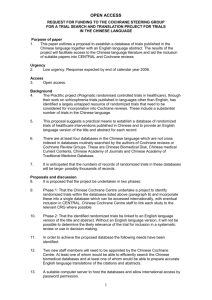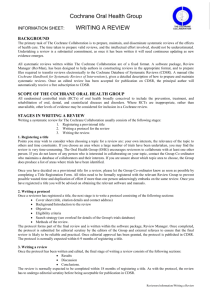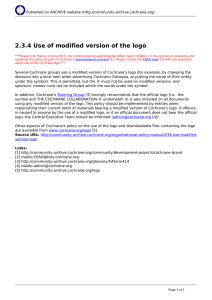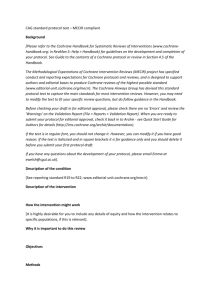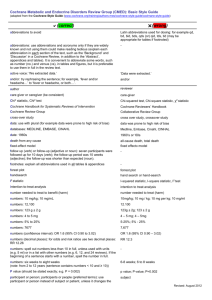SUPPLEMENTARY FILE 1 We received letters of support and
advertisement
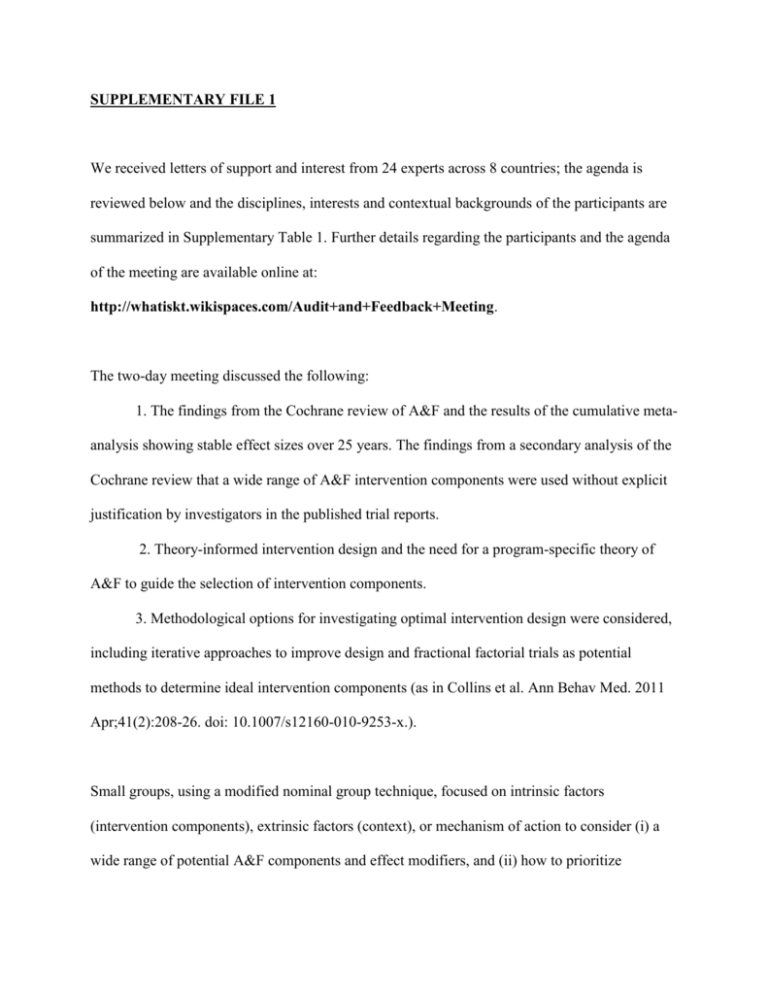
SUPPLEMENTARY FILE 1 We received letters of support and interest from 24 experts across 8 countries; the agenda is reviewed below and the disciplines, interests and contextual backgrounds of the participants are summarized in Supplementary Table 1. Further details regarding the participants and the agenda of the meeting are available online at: http://whatiskt.wikispaces.com/Audit+and+Feedback+Meeting. The two-day meeting discussed the following: 1. The findings from the Cochrane review of A&F and the results of the cumulative metaanalysis showing stable effect sizes over 25 years. The findings from a secondary analysis of the Cochrane review that a wide range of A&F intervention components were used without explicit justification by investigators in the published trial reports. 2. Theory-informed intervention design and the need for a program-specific theory of A&F to guide the selection of intervention components. 3. Methodological options for investigating optimal intervention design were considered, including iterative approaches to improve design and fractional factorial trials as potential methods to determine ideal intervention components (as in Collins et al. Ann Behav Med. 2011 Apr;41(2):208-26. doi: 10.1007/s12160-010-9253-x.). Small groups, using a modified nominal group technique, focused on intrinsic factors (intervention components), extrinsic factors (context), or mechanism of action to consider (i) a wide range of potential A&F components and effect modifiers, and (ii) how to prioritize questions related to such factors for future research. Deliberation results from small groups were disseminated amongst the whole group to ensure accuracy and to elicit further input. The academic discussion was complemented by participants describing their experience developing and delivering feedback to health care providers. These ‘real-world’ examples highlighted the practical feasibility constraints and issues that must be considered when delivering A&F. They also raised awareness of the opportunities to leverage ‘natural laboratories’ for A&F research. Supplementary Table 1. Participant characteristics Name Country Expertise *Noah Ivers Canada Lead author, Cochrane review of A&F *Jeremy Grimshaw Canada CRC in Knowledge Transfer and Uptake *Heather Colquhoun Canada Behavioural theory and A&F Jamie Brehaut Canada Cognitive psychology Janet Curran Canada Tailoring intervention design based on barriers Merrick Zwarenstein Canada Pragmatic health services trials Mark Chignall Canada Human factors engineering for intervention design Sumit Majumdar Canada Quality improvement trials ^Craig Campbell Canada CPD for Royal College of Physicians ^Lynn Dionne Canada Health Quality Ontario quality improvement plans ^Donna Angus Canada Director of KT, Alberta Innovates-Health Solutions ^George Collier Canada Manager, Nova Scotia Health Research Foundation ^Tupper Bean Canada Primary care quality improvement consulting *Susan Michie UK Health psychology *Jill Francis UK Health psychology Robbie Foy UK Audit and feedback trials Richard Baker UK Implementation of evidence Mary Dixon Woods UK Medical sociology *Anne Sales USA A&F for nursing and long term care, editor Implementation Science Michael Halasy USA Organizational theory and A&F Sylvia Hysong USA Industrial psychology and A&F ^Steve Ornstein USA Quality improvement trials, founder of PPRNet ^Cara Litvin USA Quality improvement involving A&F ^David Price USA CPD and Quality improvement at Kaiser Gro Jamtvedt Norway Author of Cochrane A&F review, Physiotherapy Signe Flottorp Norway Author of Cochrane A&F review, Family medicine Denise O’Connor Australia Health professional behavior change interventions Simon French Australia Author of Cochrane A&F review, Chiropractic Sue Wells NZ Implementation of web-based decision support Michel Wensing Holland Primary care research, editor Implementation Science * = Organizing committee, ^ = Knowledge users


